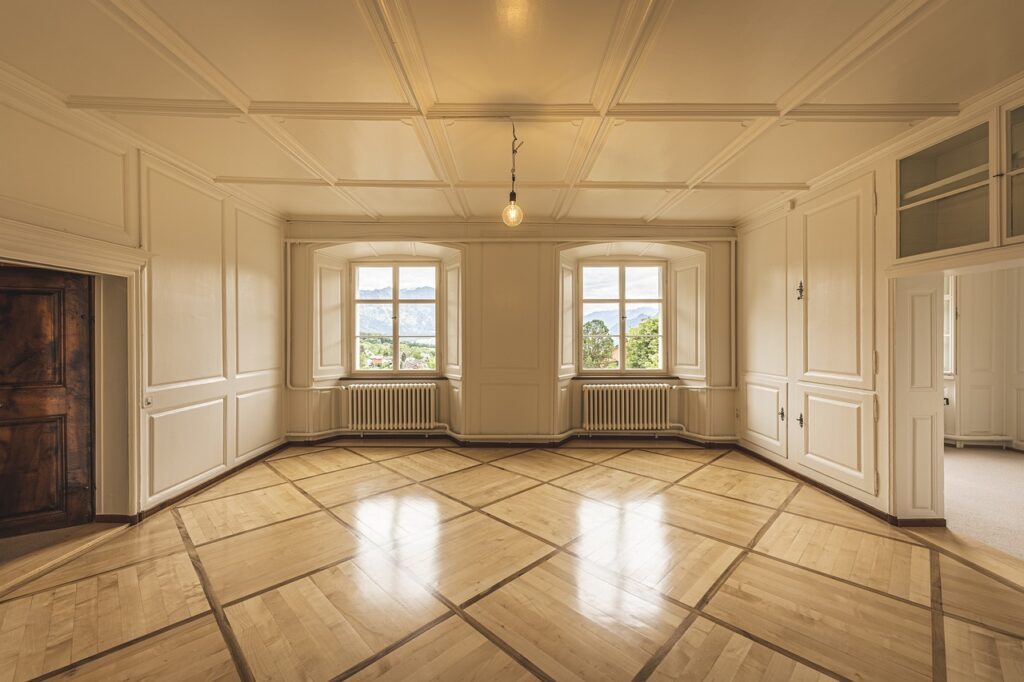First impressions sell homes. Buyers aren’t just walking through—they’re judging, often within seconds. If your place doesn’t look sharp from the jump, it won’t matter how new the water heater is or how solid the foundation feels. Too many sellers make the mistake of skipping the basics: cluttered counters, dingy lighting, chipped baseboards. These things speak louder than you’d think.
The cost of cutting corners? Lower offers, longer time on the market, or no offers at all. In this market, prepping smart doesn’t have to break the bank. Focus on what hits fast: clean lines, good lighting, and neutral tones that let people picture their own story in the space. Get honest feedback, make the simple fixes, and don’t try to DIY what actually needs a pro.
It’s not about creating perfection. It’s about removing distractions. That’s how you turn curious browsers into serious buyers.
Spot Issues Before Buyers Do
You don’t want surprises during the home inspection. Buyers will use any flaw they find as leverage—or a reason to walk away. Spotting problems ahead of time gives you control. Handle them before they become negotiation killers.
Small repairs now are better than dragging out a deal later. A dripping faucet, cracked tile, or faulty outlet might not seem like a big deal to you. But to a buyer? It looks like poor maintenance. Fix the cheap stuff early and remove easy objections before the inspector even shows up.
Speaking of inspectors, they’re trained to look for more than just cosmetic issues. Expect them to flag things like roof damage, water stains, foundation cracks, outdated wiring, or signs of pests. These aren’t just red flags—they’re deal breakers if ignored.
Get ahead of the game. Walk your house like a buyer would. Bring in your own inspector if you’re not sure. In this market, proactive always beats reactive.
Dirt Kills Deals—Seriously
You can stage the lighting, fluff the pillows, and bake all the cookies you want—but if the place isn’t clean, buyers won’t bite. Dirt, dust, and grime are instant deal-breakers, especially in high-touch areas. We’re talking baseboards, ceiling fans, window sills, and all those corners sellers stop seeing after a while. Even the smell of a lived-in home (especially if pets are involved) can silently wreck first impressions.
Buyers don’t just notice what’s showroom shiny—they spot what’s neglected. Dirty grout, smudged appliances, or fingerprint-covered light switches scream, “this place hasn’t been cared for.” And you can bet that’s going to affect their offer—or whether they make one at all.
So do you scrub it yourself or bring in the big guns? DIY cleaning saves money, sure. But unless you’re obsessive and thorough, pros are worth every cent. Professional cleaners know how to deep-clean kitchens and bathrooms so that they sparkle under harsh daylight. For under a few hundred dollars, it’s an investment that can add thousands to your final sale.
Bottom line: clean is not optional. It’s your first line of defense—and a subtle sales weapon you can’t afford to skip.
Micro-Niching for Loyal, High-Intent Audiences
In 2024, broad appeal is overrated. The creators winning in today’s landscape aren’t chasing everyone—they’re speaking directly to someone. And that someone is all-in. Think hyper-specific channels like “trail cooking for ultralight backpackers” or “retro game reviews by dads in their 40s.” It’s about finding your corner of the internet and owning it completely.
Micro-niching does more than tighten your focus. It builds loyalty. When a viewer feels like your content was made exactly for them, they stick around. They comment. They share. They convert. You don’t need a million subscribers when 10,000 superfans hang on your every upload.
And when it comes to brand deals or monetizing? Depth beats width. Niche audiences might be smaller, but they’re far more intentional. Advertisers are picking up on that. So are Patreon supporters. In today’s cluttered feed, clarity wins—and niches give you that edge.
Fix the Small Stuff Before It Costs You Big
Prospective buyers don’t need a full inspection report to start subtracting from your asking price. They use what they see and hear: a dripping faucet, a squeaky door hinge, a patch of peeling paint. Every minor flaw gives them ammo to negotiate—or walk.
These aren’t deal-breakers because they’re expensive to fix. They’re deal-breakers because they send a signal: if this is what’s visible, what’s being ignored below the surface?
The good news? Most of these are low-cost, high-impact fixes. A fresh coat of paint, tightened hardware, clean caulk lines, and working lights don’t just tidy things up—they give potential buyers fewer excuses to push your price down. Focus on the cosmetic stuff people notice first, because that’s where your ROI lives.
First impressions start at the curb. Before a buyer even touches the doorknob, they’re sizing everything up—from the grass height to the condition of your front steps. That’s why smart sellers focus on small, fast curb appeal upgrades that pack a punch.
Start with the basics: a tidy lawn, fresh mulch, clean windows. Replace faded house numbers with something clean and modern. If your porch light looks dim or dated, swap it for something that feels current. These upgrades can be done in a weekend and make a big difference in how a property is perceived.
But don’t try too hard. Going too bold or trendy—like neon paint or an overly stylized mailbox—can backfire. Stick to what feels clean, inviting, and updated. The goal isn’t to wow with flash—it’s to build trust at first glance.
When it comes to selling a home, personal style can actually get in the way. Buyers walk in trying to imagine themselves there—not you. That means the custom art wall, overly specific color palettes, or playful collections might be working against you. Strip it back. Keep it clean.
Furniture placement is another quiet dealmaker. Arrange things to make rooms feel spacious and logical. Show conversation areas, clear walkways, and purpose in every corner. Don’t just place furniture the way you live—style it for how someone might aspire to live.
And if the space is empty? Virtual staging has become a rock-solid backup. Digital tools now create photorealistic rooms that help buyers visualize potential. It’s fast, affordable, and more flexible than ever. Just remember: the goal is to invite people to see the home as theirs, not to admire your flair.
Selling a home isn’t just hanging a ‘for sale’ sign and waiting for offers to roll in. Doing it solo? That means you’re on the hook for pricing strategy, showings, contracts, negotiations, and legal paperwork. Miss a detail and you could end up with a lawsuit—or a lowball offer you’re stuck accepting. That’s why going it alone is a gamble, not a shortcut.
A good listing agent earns their commission. They’ve got pricing data, staging advice, and marketing reach you don’t. More importantly, they act as a buffer during negotiations and know how to get your home seen by qualified buyers. Look for agents with a strong local track record, clear communication, and a no-gloss breakdown of what your home will realistically sell for and how fast.
Before signing anything, ask the right questions: What’s your average days on market? How will you market my home? What’s your communication style? Are your fees negotiable? Anything that feels vague—run. This person is your business partner for one of your biggest transactions. Choose like it.
Timing Your Home Sale: Strategy Over Speed
Selling your home isn’t just about listing when you’re ready—it’s about listing when the market is ready for you. Understanding seasonal trends, buyer behavior, and your own next steps can make a major difference in both your final sale price and how fast you close a deal.
Know the Season, Know the Pulse
Seasonal factors can improve or weaken your selling position. Timing your sale with these patterns can boost visibility and demand:
- Spring: Typically the hottest time to sell. Buyers are active and families are planning moves before the next school year.
- Summer: Still strong, especially early summer, but buyer urgency can dip mid-season due to vacations.
- Fall: A shorter window, but often serious buyers who want to close before the holidays.
- Winter: Slower market overall, but less competition. Motivated buyers and sellers may find good opportunities.
Should You Wait or Move Fast?
Every seller asks the same question: “Should I wait until the market gets better, or sell now?” Here’s how to decide:
- Sell fast if you’re entering a buyer-heavy market or need to align with a purchase deadline.
- Wait to list if prices are trending upward and you’re not in a rush to move.
- Watch market signals, like mortgage rate shifts, local inventory changes, or economic updates
Aligning Your Sale with Your Next Move
Selling your home is only one side of the equation—what’s next for you?
- Buying another home? Consider coordinating your timelines to avoid costly double moves or temporary housing.
- Relocating for work or lifestyle? Map out the ideal closing window and build in flexibility.
- Downsizing or upsizing? Time your sale to give yourself breathing room—both financially and emotionally.
The takeaway: A well-timed sale is about more than the season—it’s about syncing your goals with current market dynamics. Strategic sellers don’t chase perfect timing. They prepare, adapt, and move with clarity when the moment is right.
Why Overpricing Kills Momentum
Price it too high, lose your audience—simple as that. In the world of real estate, the same logic applies. Set your listing price beyond what the market can bear, and you’ll end up with fewer eyes, fewer showings, and stale days on market. Buyers are savvy, and the first week is make-or-break. If your home sits too long, people start asking, “What’s wrong with it?”
Agents use comps—comparable recent sales—to anchor their pricing strategy. It’s not just about square footage or upgrades; it’s about what similar homes in your area actually sold for, not what they were listed at. You can use the same approach: assess three to five neighboring properties that closed within the past few months, adjust for differences, and get a realistic picture of market value.
“Testing the market” by listing high with the thought that you can always drop later sounds harmless, but it’s risky. Overpriced homes often miss the ideal buyer in those first critical days. And price cuts? They signal desperation. Better to get it right the first time and attract the attention your listing deserves.
Negotiations get real after the offer is accepted. This is the stretch where emotions ramp up and leverage becomes everything. You’ll need to know when to push, when to give ground, and when to lock in your position. That inspection report? It’s not just a checklist—it’s ammunition. Minor issues might get shrugged off, but major repairs are fair game for a price reduction or a request to fix before closing.
Same goes for closing costs. Who pays what is often up for debate. You can ask the seller to contribute, especially if your offer was strong or the market’s softening. If the seller’s not budging, weigh what matters most—paying a bit extra now, or jeopardizing the deal over a few thousand dollars.
The key: be firm without being rigid. Know your limits, but don’t be afraid to walk away if the numbers no longer make sense. This is part strategy, part poker face.
Want more tactical tips? Check out How to Negotiate the Best Deal as a Homebuyer.
Gear and Costs: What’s Actually Essential in 2024
You don’t need a Hollywood setup to vlog in 2024, but you do need a few basics dialed in. Start with a decent camera—your phone might cut it if it shoots in 4K. Add a solid external mic (don’t skimp here), and make sure your lighting is clean and consistent. A tripod or stabilizer helps, especially if you’re going mobile. Editing software? Plenty of free or affordable tools do the job—CapCut, DaVinci Resolve, even mobile apps with surprising power.
What’s not worth the expense? Trendy gear that doesn’t solve a real problem. If your workflow isn’t slowed by your current setup, don’t panic-upgrade. Don’t chase microphones just because they’re popular on YouTube forums, and skip the $500 RGB light panels unless you’re filming a music video.
Do the setup work properly now. Build templates, dial in presets, and get your recording space locked. Front-loading this effort means smooth, scalable production down the line. The better your system, the easier it is to stay consistent—and in 2024, consistent equals visible.




